
The Business of Fashion
Agenda-setting intelligence, analysis and advice for the global fashion community.

Agenda-setting intelligence, analysis and advice for the global fashion community.
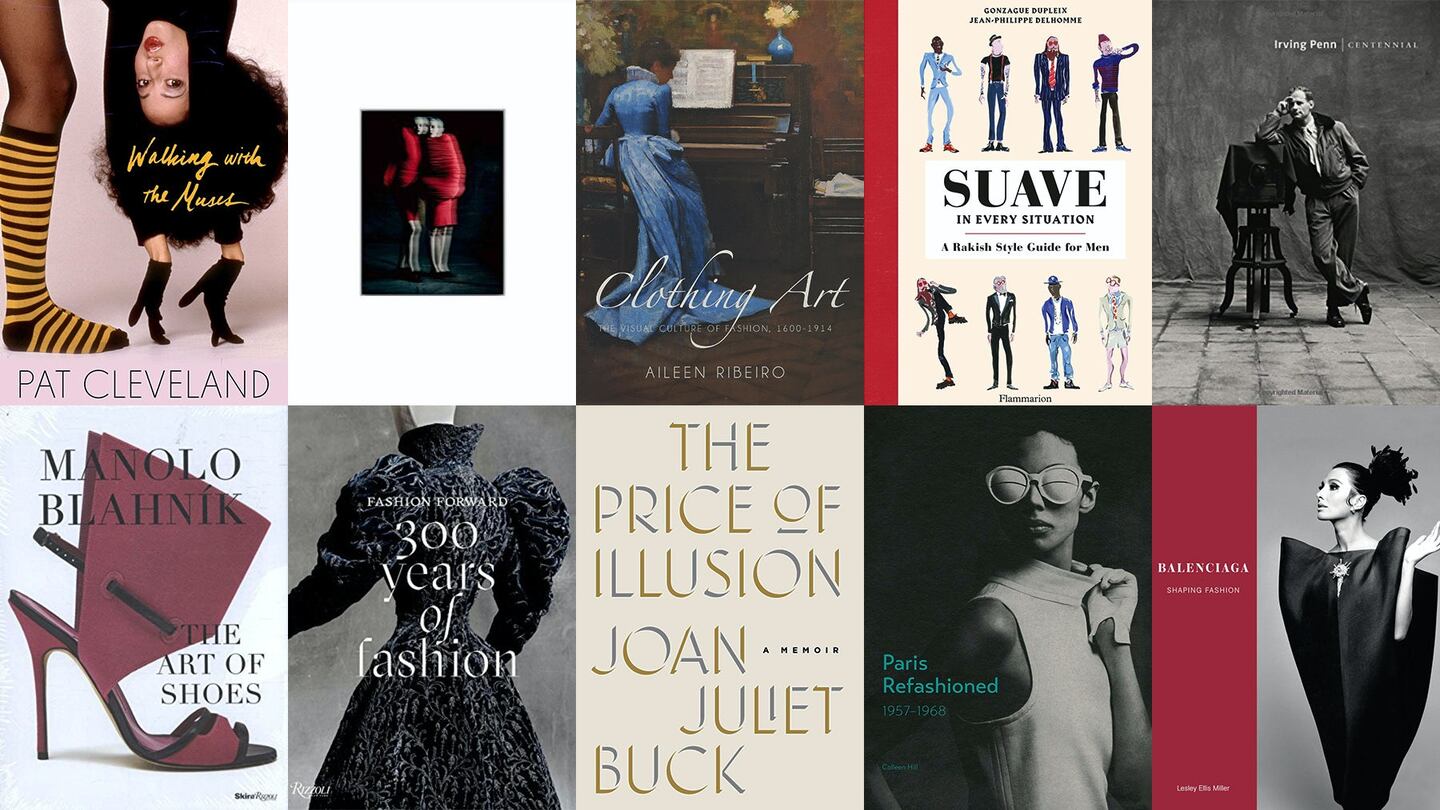
LONDON, United Kingdom — It's that time of the year again. On Midsummer's Day, BoF columnist Colin McDowell brings you his bi-annual list of the most intriguing fashion tomes, including books on Rei Kawakubo, Irving Penn, Balenciaga, Yves Saint Laurent's Dior years and more.
[ Clothing Art: The Visual Culture of Fashion 1600 - 1914 Opens in new window ]
Professor Aileen Ribiero is one of the worlds top fashion historians. But she is also an expert in dress as seen in portraits and the social life that they have recorded. "Clothing Art" is a vast, wide-ranging survey of the links between portraits and the dresses worn for them, but also the movements of taste and style that were epitomised in the courts and fashionable lives of Europe.
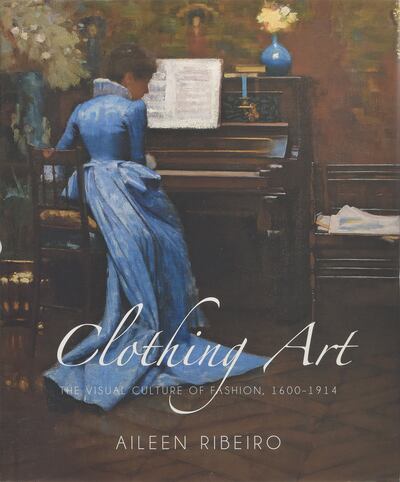
"Clothing Art: The Visual Culture of
Fashion | Source: Yale
Her analysis of dress and social mores in art, such as her masterful unpicking of Hogarth’s "Marriage A-La Mode" and Rake's "Progress", are just two of the many commentaries on paintings we think we all know, but find that Ribeiro knows more.
ADVERTISEMENT
This book is the result of a lifetime of looking, thinking, reading and then doing all three again with a skill that makes even the apparently most clichéd of portraits take on a different life. All in a book that deals authoritatively with many different styles and types of paintings, from the sixteenth century of Caravaggio to Rembrandt to Alma-Tadema and Paul Poiret. Beautifully written, this book really does reveal the visual culture of fashionable clothing over 300 years.
[ The Price of Illusion: A MemoirOpens in new window ]
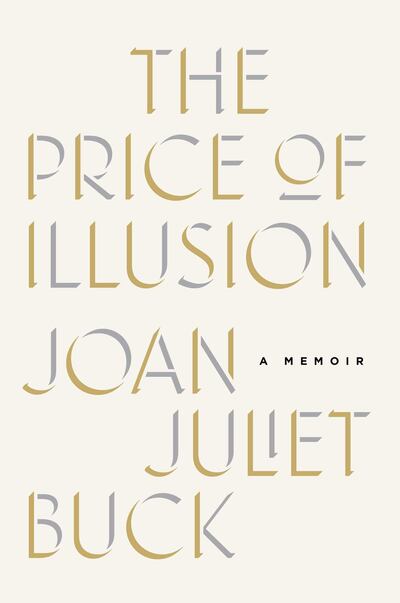
"Price of Illusion: A Memoir" |
Source: Atria Books
Joan Juliet Buck is the only child of a larger-than-life film producer. Her childhood and youth, although wealthy and privileged, were frequently lonely and sad even though her world enabled her to know and be part of the Hollywood hierarchy she was surrounded by, such as Lauren Bacall and John Huston.
Through fashion luminaries of the calibre of Paloma Picasso and Karl Lagerfeld, she decided that the fashion world was more right for her than the world of film and film makers. But no less turbulent. This is a very honest and frequently poignant biography. Joan Juliet Buck is a woman of immense talent, which was certainly recognized, even though the only foreign editor-in-chief of French Vogue seems never to have found her true niche in the way Anna Wintour has.
Her honesty about herself and her world make "The Price of Illusion" a compulsive read. It shows how to clothe despair with wit and style in a way which makes this a book to be remembered and even revisited by anyone wanting an honest assessment of the fashion business in the last twenty years.
Reading this gripping and intensely personal story, it soon becomes apparent that Buck, in her honesty about herself, makes "The Price of Illusion" a gripping survival manual for those, who like her, are simply too intelligent for the fashion world. Joan Juliet Buck has an incisive wit that reminds me of Dorothy Parker.
[ Manolo Blahnik: The Art of ShoesOpens in new window ]
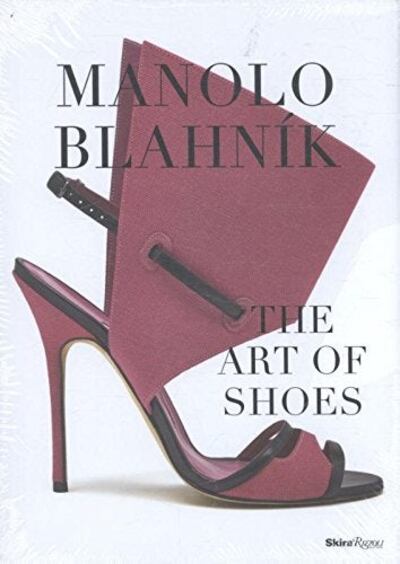
"Manolo Blahnik: The Art of Shoes" |
Source: Skira/ Rizzoli
There have been several beautiful books published about Manolo Blahnik but this little book tells more about him than most. The catalogue of a travelling exhibition, it has an alphabetic format, whereby Manolo writes his comments to accompany either a drawing or a photograph of one of his creations.
ADVERTISEMENT
Each letter of the alphabet is given a spread in which Manolo writes about the shoe. Personal and fresh, they have clearly been spoken naturally and recorded which, in my opinion, having interviewed Manolo many times since the book we did together in 2000, is the very best way to get him to unlock his knowledge and memory of a vast range of cultural interests- from music, film and literature to art, architecture and travel.
"The Art of Shoes" brings alive the charm and style of a totally unique creator. I can hear his voice on every page.
[ Suave in Every Situation: A Rakish Style Guide for MenOpens in new window ]
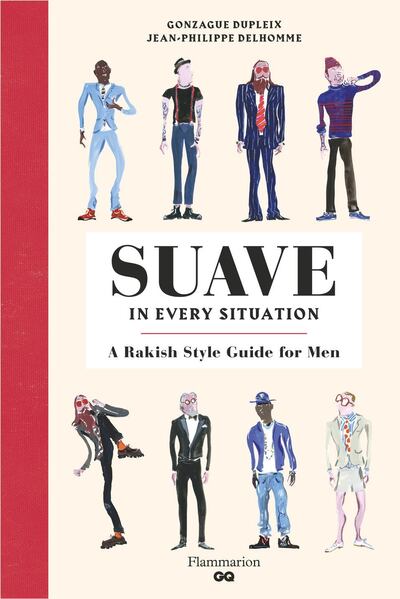
"Suave in Every Situation" | Source: Flammarion
This is a fun book that, nevertheless answers questions that young men in particular take very seriously: how to avoid fashion and style faux pas and, above all, being laughed at.
Gonague Dupleix and Jean-Philippe Delhomme really have their finger on male insecurities and respectively deal with them in witty drawings and words that have the authority of people who know.
The approach is tongue-in-cheek but the information is sound and the questions are very much in the minds of young fashionistas, covering behaviour as well as style.
A random selection: “How to Leave a Party?", "How to Turn Up the Collar on a raincoat?", "Should You Tuck in Your Sweater?” and many more including my favourite: “Would Marcello Mastroianni Smoke an Electronic Cigarette?” A great book for beach Q&As when it is too hot to crawl down to the sea but with enough sound judgement behind the jokes to make it worth carrying home.
[ Paris Refashioned 1957 - 1968Opens in new window ]
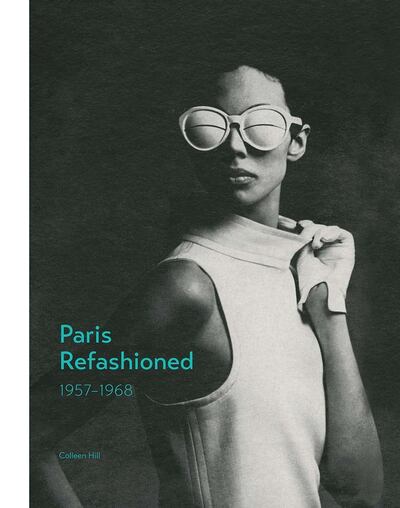
"Paris Refashioned 1957-1968" | Source: Yale
ADVERTISEMENT
The nineteen sixties invention of youth fashion— if such a thing is an invention— rather than an evolution— is confidently claimed by London, New York and Paris, all of whom point to their “Youth Quakes” of the time. Mods and Rockers, Carnaby Street and Mary Quant; Student Unrest, YSL’s Rive Gauche— it is easy to confuse the creators with the buyers. As this admirable book, devoted to the story of ready-to-wear makes clear, it was really Paris that led the way.
The soldiers in an entirely new movement were called Stylistes (not to be confused with modern day stylists) and were recruited from the women who wanted their clothes to be modern and, because they could not find them, decided to make their own. They often started from scratch, with no art school training or experience of the fashion system, apart from the clothes they already bought - although Emmanuelle Khan had worked as a model for Balenciaga.
They were part of a small army of women who wanted their own clothes: Michele Rosier and, most successfully, Sonia Rykiel, who wished to be originators, not copyists. They were not interested in the pret-a-porter that the couture houses like Ungaro, Courreges and Cardin were producing, as trade-offs from their ready to wear ranges.
Incredibly, since their influence was fundamental to the development of fashion, this is the first book (an accompaniment to an exhibition at the Fashion Institute of Technology, New York last year) devoted to what was a significant chapter in what could be called the democratisation of high-street fashion. Supported by Elle and stars such as Brigit Bardot and Francoise Hardy, this movement made sure that France had ready-to-wear quite independent from the couture houses.
[ Rei Kawakubo/ Comme des Garçons: The Art of In BetweenOpens in new window ]
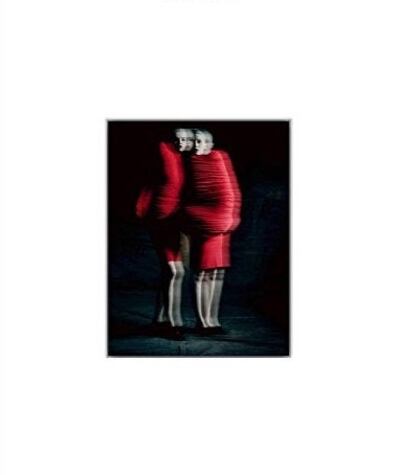
"Rei Kawakubo/ Comme des Garcons |
Source: Yale University Press
Possibly the most interesting person working currently in fashion, Rei Kawakubo, lives in a world that, even today, 35 years since she established Comme des Garçons in Paris, is opaque. Over the years I have personally enjoyed more of her collections then not and have been stimulated and challenged when writing about them. But the fact remains that, like many admirers, I don't understand even now, what she sees as her role in fashion, nor, indeed her relevance to its simplistic high street world.
At least, that was the case until I opened the catalogue of her exhibition at the Metropolitan Museum of Art, New York. Frankly, I expected many cryptic quotes and non sequiturs of the sort we have become used to over the years - but nothing that could be called "opening up." My spirits flagged when I saw the length of the interview she had given to Andrew Bolton, curator of the show. In fact, it is a masterful interview, but rather the equivalent of trying to drive a vehicle with a blacked out windscreen. It would be true to say Rei Kawakubo is, by inclination, a person of few words, most of them floating like small clouds against a vast sky of personal assumptions and insubstantial meanings. "The void is important", "I have no inspiration, I never do" and my personal favourite piece of Rei-speak, her 1993 lament that clothes always have to be worn, which imposes limitations. Ya don't say lady! Get over it!!
But, let's be kind. This is a very good catalogue and one into which I will regularly dip - something I have been doing compulsively since it arrived on my desk. Superb photographs of the garments enliven the pages, always quotes from the designer, ranging from the ludicrous (“The absence of concept is the concept itself”) to the revealing, such as “I created my own tradition. I am not inspired directly by other people. My point of departure is always abstract.”
In an industry increasingly plagiarist, this alone makes Rei Kawakubo worth her weight in gold to us all, even when she irritates people like me immensely.
If only she could translate her thoughts into garments ordinary women could understand, she would not only be the greatest modern fashion figure but, like Joan of Arc, ride at the head of a desperate and lost design world which longs for a lead away from the juvenile jokes that pass, and shamelessly are praised by commentators, as fashion.
But perhaps Rei Kawakubo, intellectual, spiritual and essentially practical, knows that the only way to enter her personal kingdom is to look, learn and analyse everything she does. That is why this book is such an invitation to those with the courage to take it up.
[ Irving Penn: CentennialOpens in new window ]

"Irving Penn: Centennial" | Source: Yale
Irving Penn was born in 1917 and died in 2009, a career that spanned almost 70 years. His chosen environment was the studio and, if he was shooting somewhere without one, he often created it. Even at his most glamorous or exotic, what Penn photographed was not a girl in a beautiful dress, but a girl in a beautiful but carefully planned space. The same was true of a can of paint photographed for a Ralph Lauren advertisement as a still life.
Primitive tribes, cultural giants, showbiz celebrities, beautiful models – often his wife Lisa Fonssagrives – still life, nudes, cigarettes: Penn worked in Paris, New York, Peru, New Guinea and Morocco. He was a polymath, but his canvas was a small contrived space that trapped the viewer’s eye and ensured the intense attention that his work demands.
Throughout Penn’s photography there is a stillness, a frozen quality that transfixes the eye and makes it follow the contours of the objects he, as photographer and circus master, wishes it to follow. If the eye does that, it is soon apparent that there is nothing random or serendipitous. No happy accidents. These photographs are planned and executed like the paintings of the great masters. Just as the Mona Lisa was not just plonked on a seat and told to sit still, so with Penn.
He did all the thinking in advance and he knew how to achieve what he felt was the essence of the subject. He treated every subject with that sensitivity. By making this space around the subject, he simultaneously built a protective cordon sanitaire around it while making the eye follow a preordained “map” across the image. Diana Vreeland must surely have been thinking of Penn when she made her memorable remark “the eye must travel.” And this book, like the exhibition, shows the viewer how.
Because of the diversity of his subjects and his unique take on each and every one, it is not easy to bring the eye of Irving Penn, or rather the many eyes, into focus over such a wide range of attitudes as his work took to his subjects. But what makes him the greatest fashion photographer of his era is the poise and confidence with which he approached every one of his subjects. Be it a cigarette end discarded in the street or a calculating gaze from the writer Colette, to the impossible perfection of the model Dorian Leigh showing the world the way an elegant woman smokes a cigarette, or a poppy still beautiful in its death throes.
This book is produced to the highest standards and is therefore expensive, but it is not just a primer for every photographer and person involved in the visual arts. It is an essential accompaniment to the second half of the twentieth century, as no other photographer’s work quite is.
[ Fashion Forward: 300 Years in FashionOpens in new window ]
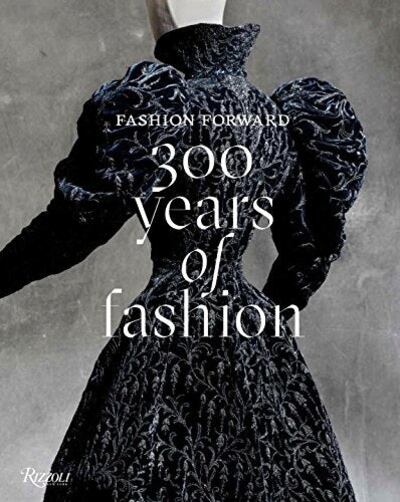
"Fashion Forward: 300 Years of Fashion" |
Source: Rizzoli
"Not another fashion survey!" I can imagine many readers sigh. My reply is, certainly not! This is a scholarly work, glorifying one of the greatest collections of historic and modern clothing in Europe. It stretches back three hundred years and comes up to the present with examples of fashion from the fashion and textiles collections in the Musee des Arts Decoratifs in Paris last year, under the creative director of Marc Ascoli. The collection is, as the preface points out, very much a work in progress with several gaps still to be filled. But it is especially rich in the work of twentieth century designers, many of whom are still working today. The emphasis of the book is firmly on French fashion with only Muiccia Prada and Charles James being given space as “foreigners.”
When we consider the influence that American designers have had on fashion since the fifties, not to mention US street and sportswear, it seems an opportunity lost not to have featured any of them. One of the essays points out the strangeness of the distinction made between fashion and clothing, but this should not put us off this masterful book. Quite apart from the standard of production–the extended captions written by the collection’s curators- make "300 Years of Fashion" a very useful addition to a library, whether private or serving an academic establishment.
[ Walking With the Muses: Pat Cleveland Opens in new window ]
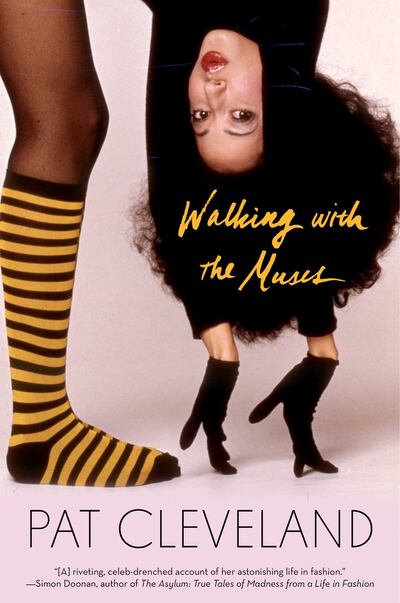
"Walking With Muses: Pat Cleveland" |
Source: Atria Books
Pat Cleveland was the precursor of the supermodels - but much livelier and more fun than most who followed in her lead. When she burst onto the New York and European catwalks in the 70s, I remember how, bohemian and elegant, she revolutionised the previously staid Milan and Reime shows.
She ran down the runway, laughing, singing and generally infecting everyone with the joke de vivier and sense of fun - which lasted away from the runway as well. Friends of Warhol, Jack Nicholson, Holstein, Warren Beatty and Jagger, Pat was a party girl, judging by this frank and entertaining account of a life well lived.
Her vignettes of working with fashion illustrator Antonio, in New York, and Lagerfeld at Chloe, bear Andre Leon Talley's comment that her life proves that "even the most outrageous dream can come true." It all started in a tenement in Harlem, making her own clothes. This book races along at a hell of a pace but also finds space for the poignancy and sadness that are the other side of the story. Her daughter, Anna, carries on mum's work with great success as a model today.
[ Dior: Yves Saint Laurent 1958 - 1960 Opens in new window ]
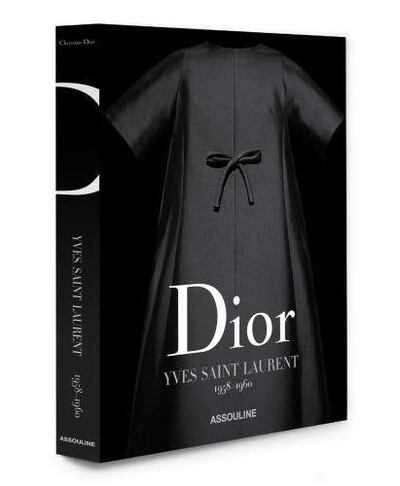
"Dior: Yves Saint Laurent" | Source: Assouline
To mark the 70th anniversary of the house of Dior, Assouline is publishing in rotation a volume devoted to each of the designers who have worked for the label since Dior's death in 1957, creating a catalogue of the best haute couture garments designed by each one. This series began with the weighty volume devoted to Dior himself, and continues with his protégé and successor, Yves Saint Laurent.
One can only assume and hope that other volumes will follow, each devoted to the couture designed by Marc Bohan, Gianfranco Ferre, John Galliano, Raf Simons and finally, the first woman in the chain of artistic directors at the house of Dior - Marie Grazia Chiuri.
This volume is a collectors item and the standard and quality of the photography, by Laziz Hamani, is outstanding. This series is clearly designed to be the major statement concerning couture at this prestigious house and the standard of the volumes ensure that they will find a place in professional libraries across the globe.
[ Balenciaga: Shaping FashionOpens in new window ]

"Balenciaga: Shaping Fashion" |
Source: V&A Publishing
This third edition of a V&A publication devoted to the life and influence of Balenciaga enters a crowded field. But the research and detail in this volume put it at the top of the list. Lesley Ellis Miller has written the most comprehensive, readable and factual book on this most reclusive of all his contemporaneous couturiers in Paris during the fifties. The result is that, for anyone interested in couture and its great days in that decade, this book is a must.
With considerable research and learning, Ellis Miller has produced an instant classic which is not easily going to be superseded. She looks at Balenciaga’s background, calls on Beaton’s understanding and shrewd commentary on his work, and explains the importance of the international clients who were so important as makers and sustainers of Balenciaga’s reputation. It also looks at the people in his company– vendeuses and house models who played such an important part in helping create the fame that has since become global.
It is a long time since I have enjoyed a book devoted to a designer as I have this one, not only because of the huge research that is behind the writer’s almost conversational style, but also because she brings alive the man still accepted as the greatest designer of the twentieth century in a way that any reader would find fascinating.
Related Articles:
[ Tomes of the Times: Holiday Reading 2016Opens in new window ]
[ Tomes of the Times: Summer Reading 2016Opens in new window ]
From analysis of the global fashion and beauty industries to career and personal advice, BoF’s founder and CEO, Imran Amed, will be answering your questions on Sunday, February 18, 2024 during London Fashion Week.
The State of Fashion 2024 breaks down the 10 themes that will define the industry in the year ahead.
Imran Amed reviews the most important fashion stories of the year and shares his predictions on what this means for the industry in 2024.
After three days of inspiring talks, guests closed out BoF’s gathering for big thinkers with a black tie gala followed by an intimate performance from Rita Ora — guest starring Billy Porter.